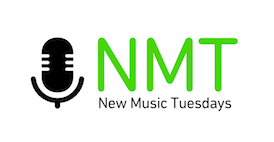
Spring has sprung! Read all of April's latest feature updates here
New Enhancements!
Work never stops here at Jelli Headquarters as the product and engineering teams labor around the clock to add more useful features to SpotPlan and RadioDash.
Our last release was a pretty big one from a technical perspective so we've taken the time and effort in our latest release to freshen up the SpotPlan interface, all with the goal of making both products simpler and easier to use.
Some specific product areas where you will notice enhancements include navigation throughout SpotPlan, date picking in SpotPlan, interactions with filters and two example product areas called out in a bit more detail below.
- Weekly Average Market GRPs Displayed on Map
- Calendar View of Flight Weeks
Essentially the entire SpotPlan product experience has been transformed to help you better use Jelli's programmatic technology to radio smarter.
Product Enhancement: Weekly Market GRPs at a Glance
- What does it do? On the details tab for a plan in SpotPlan, you will now notice a Map indicating weekly average GRPs in each market. For each market with planned impressions, average GRP levels in that market will be highlighted in green. Markets with higher-than-average weekly GRPs will be shaded in a darker green, while those markets without GRP avails at all will show on the map in white.
- How do I use it? You don't have to do anything at all! Now SpotPlan will provide you guidance on inventory availability levels making it easy to calibrate your plan at a glance.
Product Enhancement: Calendar View of Flight Weeks
- What does it do? The Goals Tab of the Plan Details page now features a more detailed view of each configuration, including the flight weeks and daypart mix. If configured, weekday exclusions and weekly spot minimum and maximum will also display in this view.
- How do I use it? Just as with the inventory availability map view you don't have to do anything to enable this enhancement either.
Always feel free to contact us at Jelli headquarters for more information on these and all Jelli product features!
Did You Know? An Overview of Programmatic Buying
In all of the recent hullabaloo about brand safety and advertisers moving their ad dollars away from Google’s YouTube, there is also a lot of coverage about how automation in digital marketing is helping to propagate the problem. And, a recent AdExchanger article reports this isn’t a new issue but one that is growing rapidly.
DoubleVerify’s CEO Wayne Gattinella shared his thoughts with AdExchanger on the issue, “We’ve seen a clear acceleration in content being published on questionable topics – content that would be considered inappropriate by most brands.” The brand safety problem comes with a price as AdAge recently reported in a story about YouTube’s falling out with brands, “The backlash has gotten so great that some have predicted the ad freeze from major brands could cost YouTube $750 million.” That’s a pretty expensive problem.
However, a lot of this coverage throws the baby out with the bath water. Programmatic ad buying isn’t a monolithic or homogeneous practice, there are actually three major types of automated media buying:
- Open exchange buying
- Private exchange buying
- Programmatic Direct
Each of these buying types have their pros and cons. However, here at Jelli we purposely built our audio demand side platform, SpotPlan® for Advertisers, as a programmatic direct technology. Why?
Wrapping your head around the various programmatic buying models with all of their complexity can be difficult. So we created the chart below to broadly summarize the three different buying methods and to illustrate why we think the programmatic direct model helps solve so many of the brand safety issues that have always plagued digital marketing.

There’s a lot to digest in the chart, but hopefully the distinctions between open vs. private vs. programmatic direct are clear. Essentially they span the spectrum of control from opaque but broad buying with open exchanges to closed but fully transparent direct buying.
We believe the programmatic direct model offers the best of all possible worlds to buyers. It automates the worst parts of ad buying - all of the manual work issuing RFPs, insertion orders, billing, etc. - while still allowing ad buyers to work directly with their publishers. Add in the cost efficiencies of algorithmic buying that extend media dollars even further - delivering more impressions for the same spend - and it quickly becomes clear that while automated buying has its issues, a programmatic direct model eliminates all of the expensive of drawbacks of traditional buying while preserving its key benefits.
As for brand safety, instead of operating in the opaque world of the open exchange or being forced to take what you’re given in a private exchange model, a buyer only buys what they want, and has the ability to choose where and when they want the ad to run. All with 100% transparency and a direct connection to a team who can quickly remedy any errors. Ultimately these benefits translate into brand safe ad buying without all of the fraud and viewability issues that digital programmatic is grappling with now.
Ultimately of course, every buyer needs to use the right model to solve their needs. And context has always been an issue in advertising - there are no absolute guarantees in making sure ads run in brand safe environments. Thankfully however, technology offers us the benefit of choice - hopefully our short overview of programmatic buying models help you make the best decision for your brand or client.

Loren has been the most radioactive in our platform over the last 30 days. As part of this prestigious award they will have a featured a quote in SpotPlan!
Keep planning everyone, the next UOTM could be you!
NMT was inspired by the day of the week that the music industry drops new album releases





